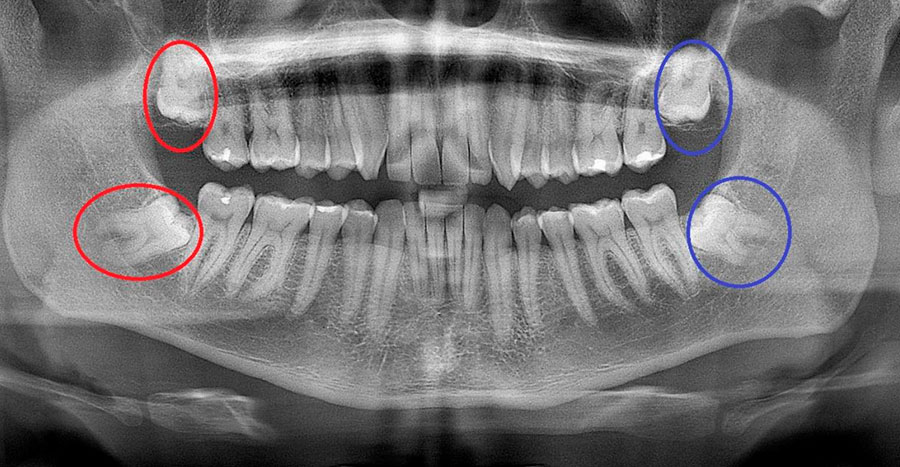
Wisdom teeth. Why do we have to take it out? Is the surgery risky? Understand step by step
The wisdom teeth are the third molars (the most posterior teeth of the dental arches) and have the function of grinding food and leaving the bolus well chewed to be swallowed (when they are well positioned). The eruption of wisdom teeth usually happens between the ages of 15 and 19.
However, human evolution has caused, in a way, wisdom teeth to lose their function. This is because food has been cooked to make it softer for consumption, requiring less chewing and jaw strength.
The removal of wisdom teeth should only be indicated if this tooth is causing a problem. The professional will make an evaluation to verify that the tooth has space and condition to be born, in addition to investigating whether there are problems that justify the removal surgery through exams (panoramic facial X-ray and/or tomography).
Wisdom teeth should be removed in cases of inflammation (pericoronitis), lack of space in the arch causing poor positioning of the tooth, impossibility of good hygiene causing accumulation of bacteria in the area, cystic lesions around the tooth, orthodontic indications for alignment of other teeth. Impacted and impacted wisdom teeth without the possibility of correct eruption should also be removed. Surgery to remove wisdom teeth is safe when it is well indicated and performed by a qualified professional, always following a strict protocol:
Our Protocol
- Preoperative: clinical, radiographic and laboratory evaluation, if necessary. Guidance, drug prescription (usually painkillers and antibiotics) and scheduling.
- Intraoperative: Local anesthesia (with or without sedation), dental and lingual prophylaxis to remove bacterial plaque, facial antisepsis, attire for professionals and patients, surgery. In the immediate postoperative period, we apply therapeutic laser for analgesia, edema prevention and better tissue repair.
- Postoperative: We follow the patient's evolution through teleconsultations and through this we can detect any postoperative abnormality and intervene if necessary. From the 5th postoperative day onwards, we can remove the suture.
WISDUS REMOVAL MUST BE CARRIED OUT WHEN INDICATED BY THE DENTIST, THUS AVOIDING PROBLEMS SUCH AS INFECTIONS, INJURIES, DIFFICULTY IN MOUTH OPENING (TRISM) AMONG OTHERS.
